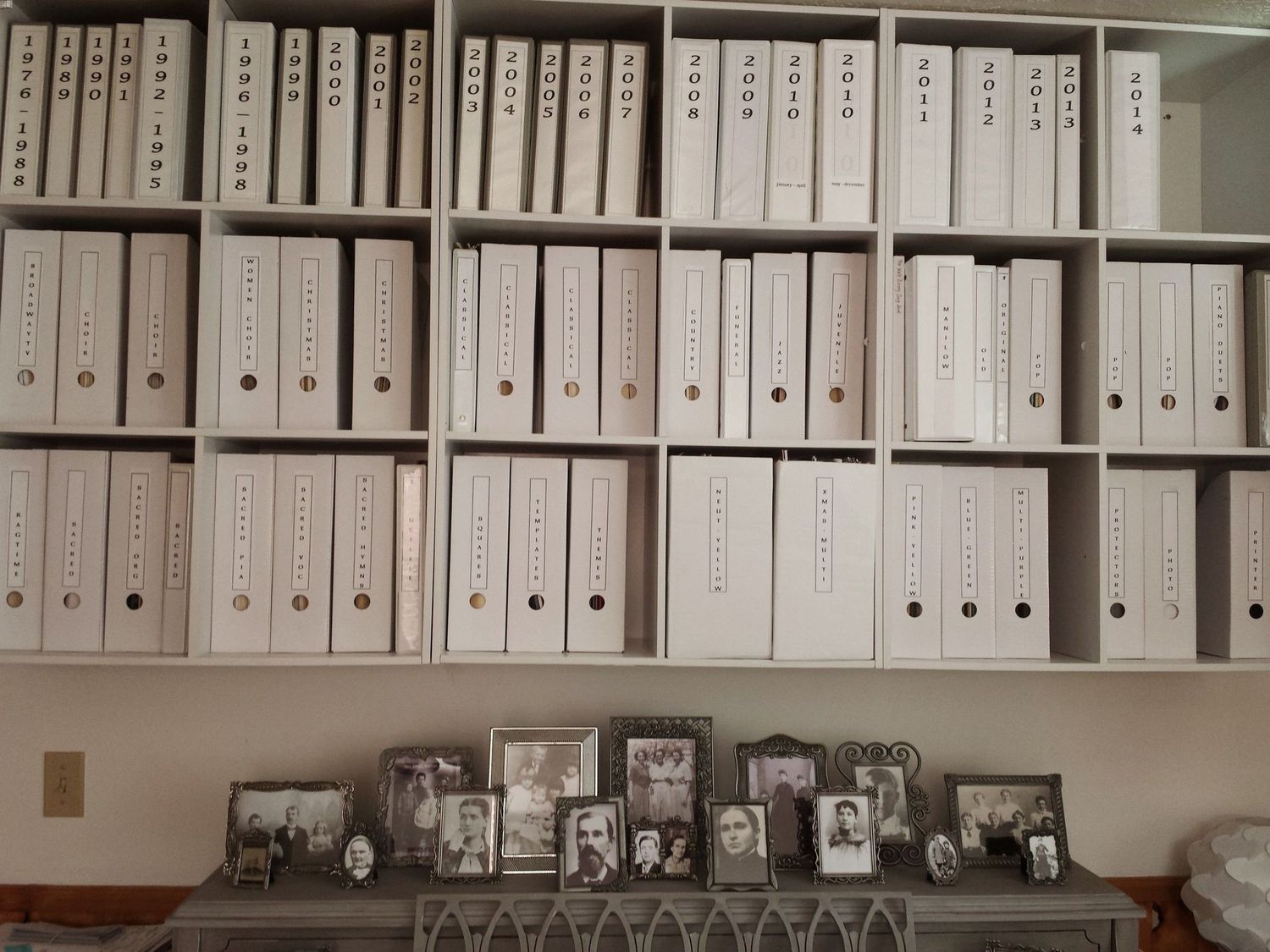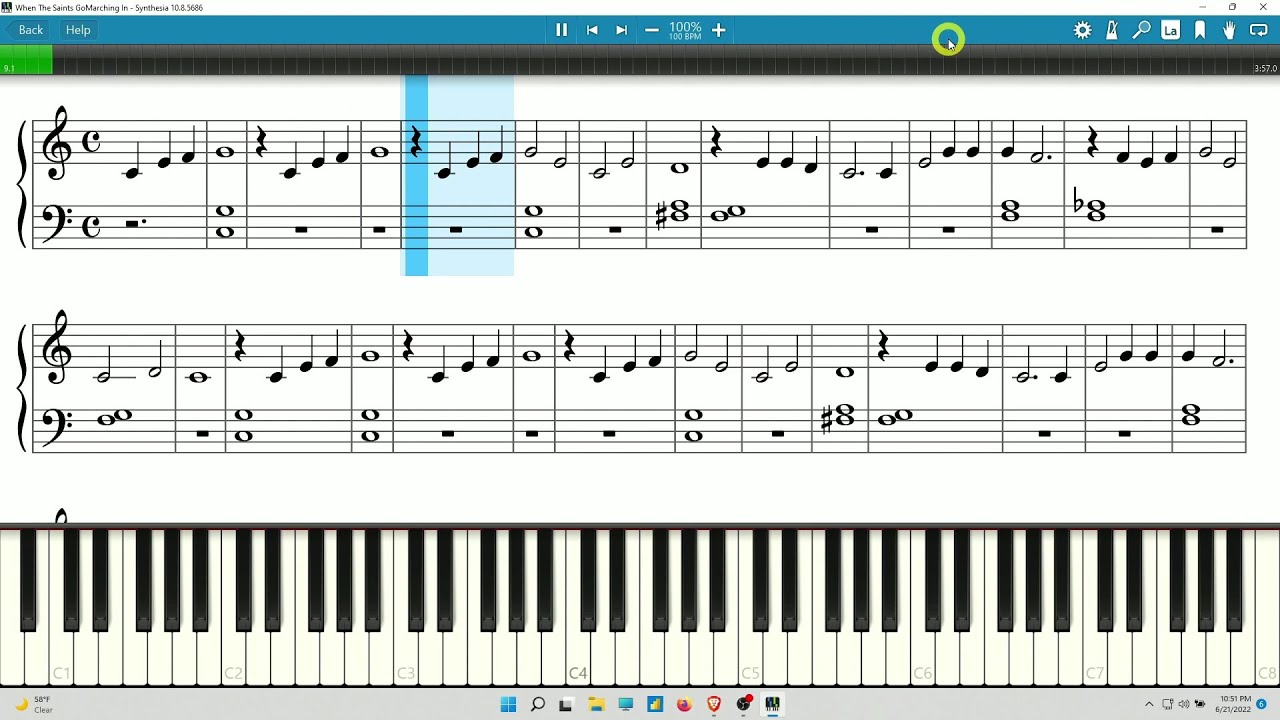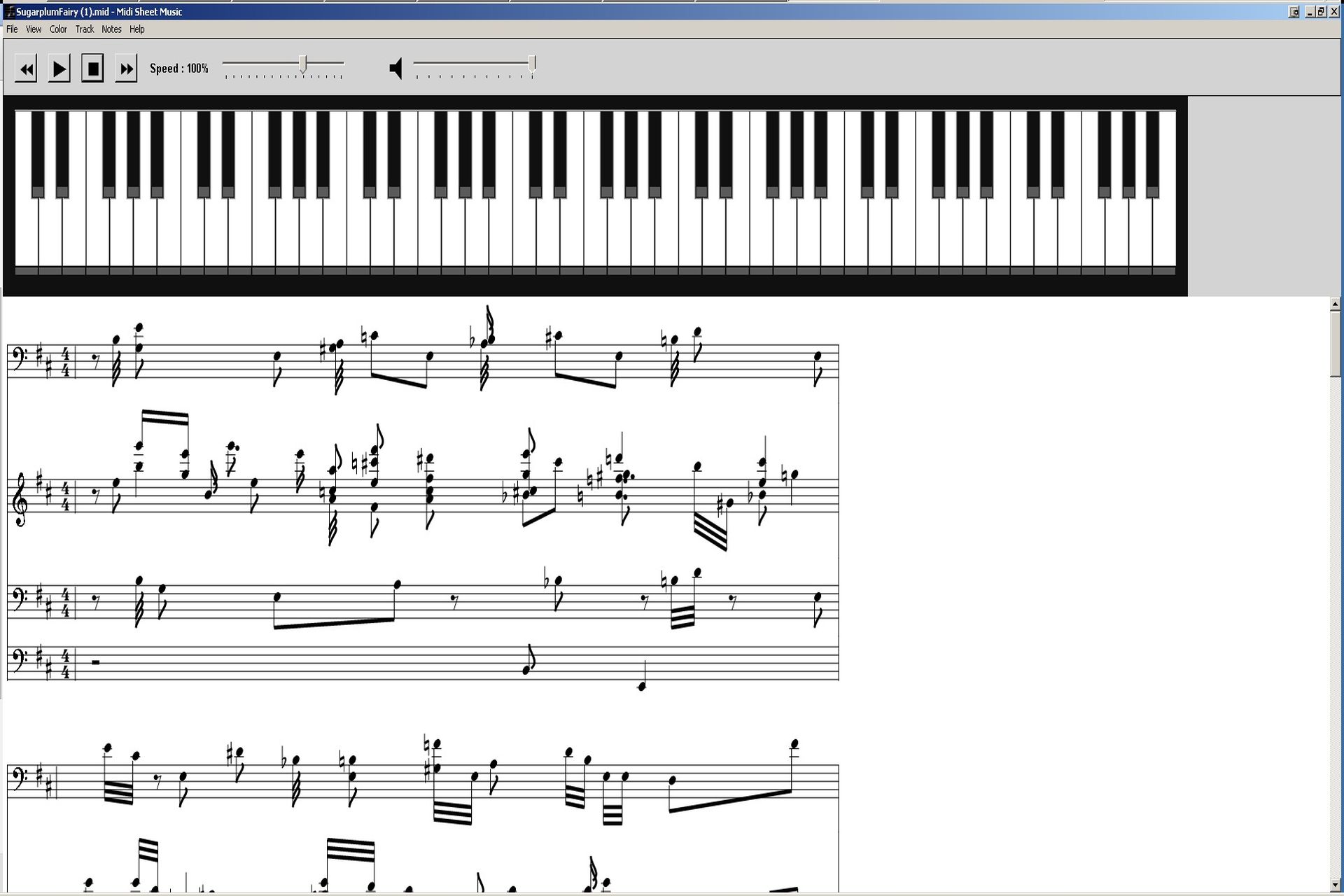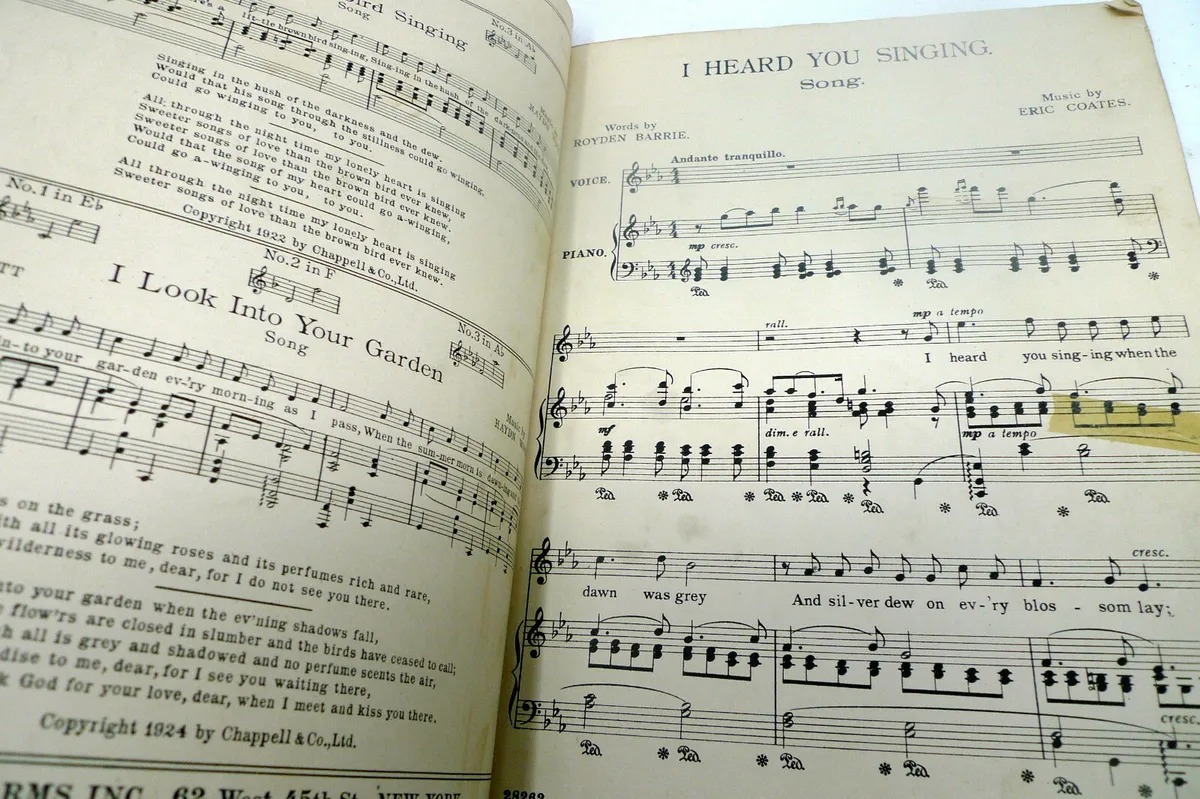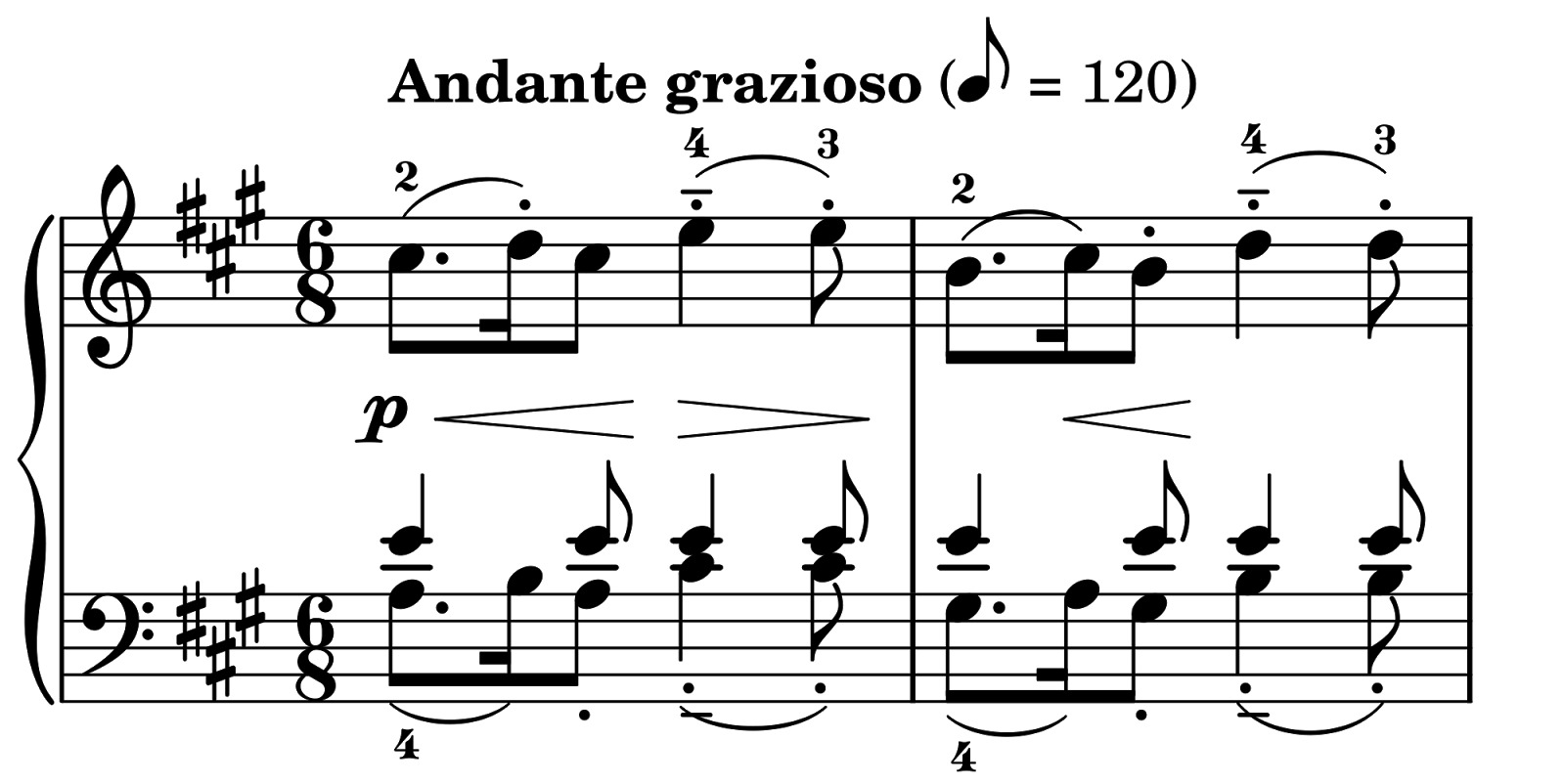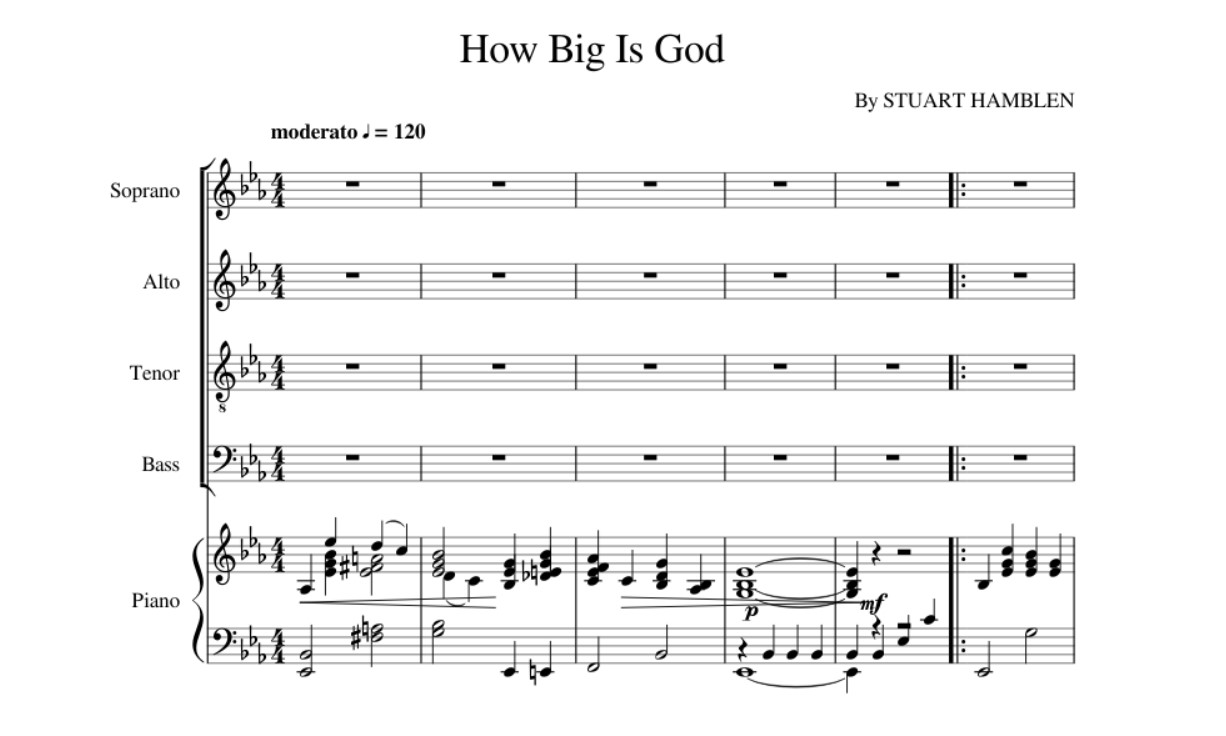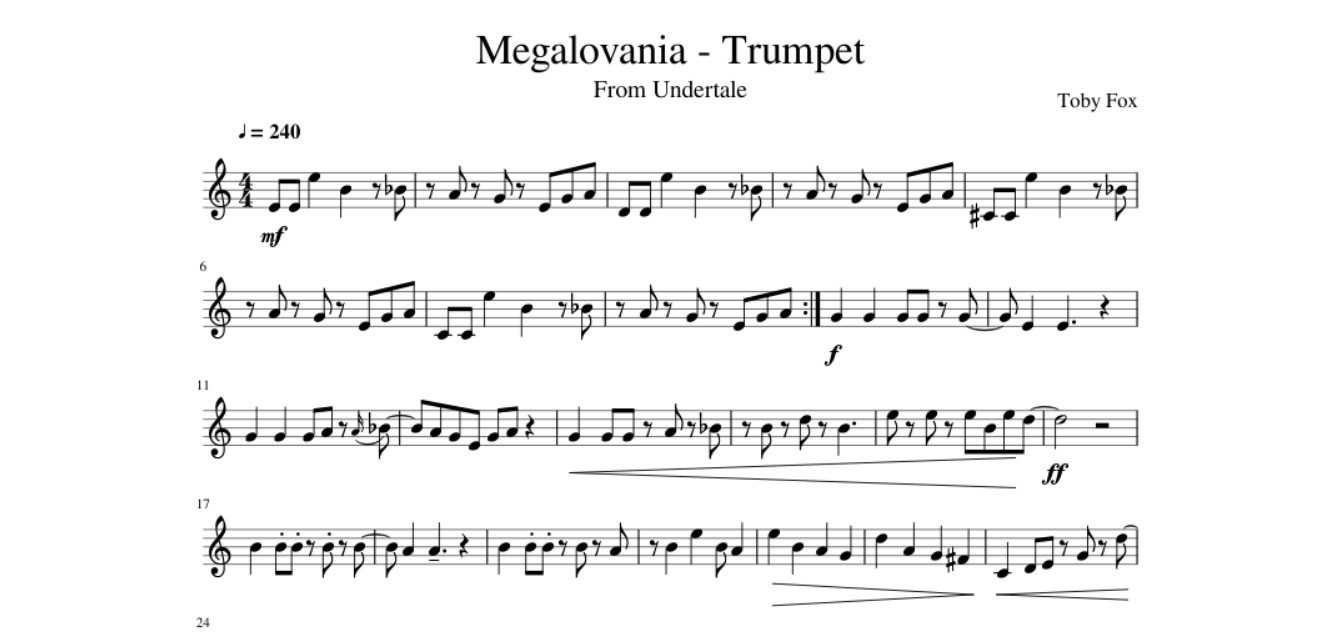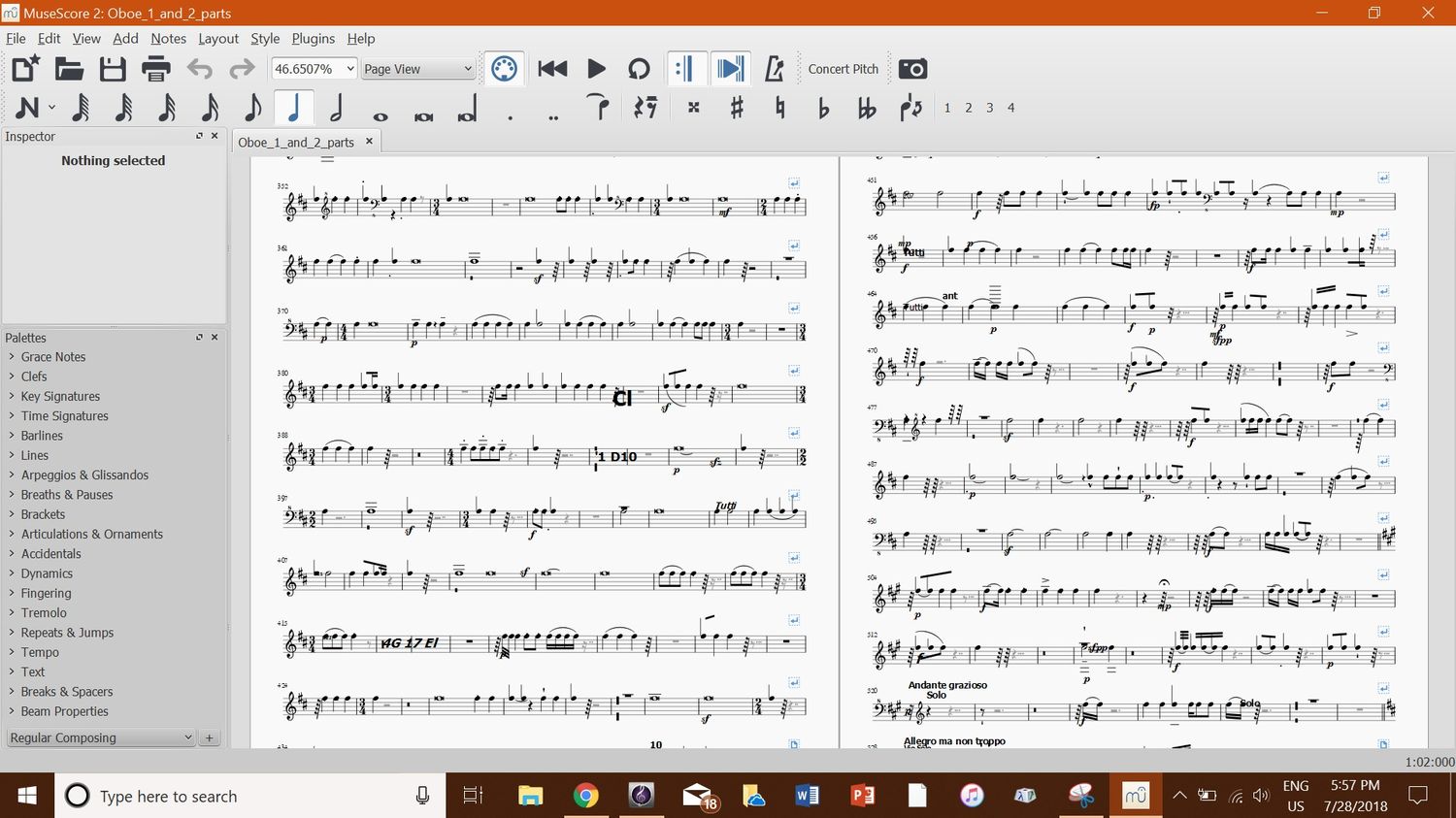Home>Production & Technology>Sheet Music>How Are Triads Represented In Sheet Music?


Sheet Music
How Are Triads Represented In Sheet Music?
Modified: January 31, 2024
Learn how triads are represented in sheet music with our comprehensive guide. Find out how to read and interpret sheet music for triads and enhance your musical understanding.
(Many of the links in this article redirect to a specific reviewed product. Your purchase of these products through affiliate links helps to generate commission for AudioLover.com, at no extra cost. Learn more)
Table of Contents
Introduction
Welcome to the fascinating world of sheet music! Sheet music is an essential tool for musicians, providing a written representation of musical ideas, melodies, harmonies, and more. In this article, we will explore how triads – one of the foundational building blocks of music – are represented in sheet music.
A triad is a chord consisting of three notes: the root, the third, and the fifth. These three notes create a harmonic foundation and define the overall tonality of a piece of music. Understanding how to read and identify triads in sheet music is a valuable skill that allows musicians to interpret and perform a wide range of musical compositions.
Sheet music represents triads through a combination of musical symbols, notation, and chord symbols. It provides a visual guide to musicians, allowing them to understand and interpret the harmonic structure of a piece. By familiarizing yourself with the standard notation and symbols used for triads, you can easily identify and analyze the chords in any sheet music you encounter.
Not only is the ability to read triads in sheet music important for performance, but it also plays a crucial role in music theory and composition. Analyzing the harmonic relationships between triads helps musicians understand the underlying structure and emotional impact of a piece. It allows composers to create compelling chord progressions and explore various harmonic possibilities.
In this article, we will delve into the basic concepts of triads in music, the notation used to represent them in sheet music, chord symbols commonly associated with triads, and how to analyze triads in different musical contexts. We will also explore common chord progressions that feature triads and discuss their significance in various musical genres.
Whether you are a beginner learning how to read sheet music or an experienced musician looking to deepen your understanding of triads, this article will provide you with valuable insights and practical knowledge. Let’s embark on this musical journey and unravel the world of triads in sheet music!
Basic Concepts of Triads in Music
Before diving into the intricacies of triads in sheet music, let’s first explore the basic concepts of triads in music. As mentioned earlier, a triad is a chord built from three notes – the root, the third, and the fifth. These three notes create a harmonically complete structure and form the foundation of many musical compositions.
The root of a triad is the note from which the chord is built. It establishes the tonal center and provides a sense of stability. The third of a triad determines whether it is a major or minor chord. In major triads, the third is a major third interval above the root, while in minor triads, the third is a minor third above the root. The fifth of a triad provides additional harmonic support and contributes to the overall sound and character of the chord.
In sheet music, triads are typically represented in two ways: through standard notation and through chord symbols. Standard notation uses a series of stacked notes on the musical staff to indicate each note of the triad. The root note is positioned at the bottom, followed by the third and the fifth above it. The specific position of each note on the staff determines its pitch and octave.
Chord symbols, on the other hand, offer a more concise and simplified representation of triads. Instead of writing out the individual notes on the staff, chord symbols use a combination of letters, numbers, and symbols to indicate the root note and the quality of the triad. For example, the symbol “C” represents a C triad, while “Cm” represents a C minor triad.
Understanding the different concepts and components of triads is essential in music theory and composition. It allows musicians to identify and analyze the harmonic structure of a piece, enabling accurate performance and interpretation. Whether you are a pianist, guitarist, violinist, or any other instrumentalist, having a solid understanding of triads lays the foundation for further exploration and mastery of music.
Now that we have covered the basic concepts of triads, let’s move on to exploring how these triads are notated in sheet music.
Notation for Triads in Sheet Music
Sheet music provides a visual representation of musical ideas, and it uses specific symbols and notations to communicate the details of a piece. When it comes to triads, sheet music employs various symbols and notation techniques to indicate the root, third, and fifth of the chord.
The most common notation for triads in sheet music is using stacked notes on the musical staff. Each note is positioned vertically, with the root note at the bottom, the third above it, and the fifth above the third. The specific position of each note on the staff determines its pitch and octave.
Additionally, different symbols are used to indicate the quality of the triad. For major triads, the symbol “M” or “maj” may be placed above the staff, indicating that the third of the triad is a major third interval above the root. For minor triads, a lowercase “m” is often used to indicate a minor third interval. For example, the triad C-E-G would be notated with a “C” note on the bottom line of the staff, followed by an “E” note on the second space, and a “G” note on the fourth line.
In some cases, sheet music also incorporates pre-defined chord shapes or voicings to represent triads. These chord shapes are typically indicated with diagrams or tablature for instruments like guitar or piano. They provide specific fingerings and positions for playing the triad.
Chord symbols are another widely used notation for triads in sheet music. Rather than notating each note individually on the staff, chord symbols offer a more condensed representation of the triad. They consist of a letter to indicate the root note of the triad and additional symbols or modifiers to specify the chord quality. For example, the chord symbol “C” represents a C major triad, while “Cm” signifies a C minor triad.
Properly understanding and interpreting the notation for triads in sheet music is crucial for musicians. It allows them to accurately read and perform the chords, ensuring that the intended harmonic structure is conveyed. Whether you are reading sheet music as a solo performer or part of an ensemble, having a solid grasp of the notation system for triads will greatly enhance your musical skills and expression.
Now that we have explored the notation for triads in sheet music, let’s move on to understanding the chord symbols commonly associated with triads.
Chord Symbols for Triads
Chord symbols are a widely used shorthand notation system that represents triads and other chords in sheet music. They provide a concise and convenient way to communicate harmonic information without writing out the individual notes on the staff. Understanding chord symbols is essential for musicians who want to navigate and interpret sheet music efficiently.
Chord symbols for triads consist of two main components: the letter indicating the root note and additional symbols or modifiers specifying the chord quality. The letter corresponds to the name of the note on which the triad is built. For example, “C” represents a C triad, “G” represents a G triad, and so on.
To indicate the quality of the triad, various symbols and modifiers are used. The most commonly encountered symbols are “M” or “maj” for major triads and “m” for minor triads. For example, “C” would represent a C major triad, while “Cm” indicates a C minor triad. Major triads are typically assumed if no chord symbol is explicitly specified.
Other symbols may be added to chord symbols to indicate specific chord qualities or alterations. For example, “dim” signifies a diminished triad, “aug” represents an augmented triad, and “sus” denotes a suspended triad. Additionally, numbers and modifiers can be used to indicate inversions or alterations to the basic triad structure. For instance, “C/E” means a C triad with E as the bass note, and “C7” represents a C dominant 7th chord.
Chord symbols allow musicians to quickly grasp the harmonic structure of a piece of music. They enable performers to create arrangements, improvise, and experiment with different voicings and chord progressions. By understanding the chord symbols associated with triads, musicians can effectively communicate and collaborate with other players, making rehearsals and performances smoother and more cohesive.
It is important to note that chord symbols are not limited to sheet music. They are also widely used in lead sheets, fake books, and popular music arrangements. Learning to decipher and interpret chord symbols is a valuable skill that expands the possibilities for musicians in a variety of musical genres.
Now that we have explored the chord symbols for triads, let’s move on to analyzing triads in sheet music and understanding their significance in musical compositions.
Analyzing Triads in Sheet Music
When reading and studying sheet music, it is important to be able to analyze triads and understand their role within a composition. Analyzing triads in sheet music involves identifying their function, relationships, and overall impact on the harmonic structure of a piece.
One of the first steps in analyzing triads in sheet music is identifying the root of each chord. The root note provides the foundation for the triad and establishes the tonal center. By identifying the root of each triad, musicians can begin to understand the key and tonality of the piece.
Next, it is important to analyze the relationship between the triads. Look for patterns and progressions that occur within the music. Common progressions include the tonic-dominant relationship (I-V), where the triad built on the first scale degree (tonic) is followed by the triad built on the fifth scale degree (dominant). Other common progressions include the subdominant-tonic (IV-I) and the relative minor-major (vi-IV-I).
Examining the inversions of triads can also provide insight into the harmonic progression of a piece. Inversions occur when a note other than the root is played as the lowest note in the triad. They can affect the overall sound and the stability of the chord progression. Pay attention to the use of inversions and their impact on the flow and tension of the music.
Furthermore, analyzing the quality of the triads is crucial. Look for major triads that create a sense of stability and resolution, and minor triads that convey a more melancholic or emotive quality. Also, keep an eye out for diminished or augmented triads, as they introduce tension and dissonance into the music.
As you analyze triads in sheet music, consider the overall context and style of the piece. Different genres and musical styles may have unique harmonic tendencies or characteristic progressions. Understanding these stylistic elements can deepen your interpretation and performance of the music.
Analyzing triads in sheet music is not only beneficial for performers but also for composers and arrangers. By studying the harmonic choices made by other composers, you can gain insights into constructing your own chord progressions and creating unique musical textures.
Remember that analyzing triads in sheet music is not about reducing the music to a series of chords, but rather uncovering the underlying structure and emotional impact. It is a way to delve deeper into the music and appreciate the choices made by the composer.
Now that we have explored how to analyze triads in sheet music, let’s move on to examining common chord progressions that feature triads.
Common Chord Progressions with Triads
Chord progressions are the backbone of many musical compositions, providing a sense of movement, tension, and resolution. Triads play a fundamental role in creating these progressions, as they form the building blocks of harmonies. Let’s explore some common chord progressions that feature triads and their significance in various musical genres.
The I-IV-V progression is one of the most ubiquitous chord progressions in Western music. It features the tonic (I), subdominant (IV), and dominant (V) triads of a given key. This progression can be found in countless songs across different genres, from pop and rock to blues and country. It creates a sense of stability and tension, leading to a satisfying resolution when returning to the tonic triad (I).
Another popular progression is the I-V-vi-IV, commonly referred to as the “pop progression” or the “four-chord progression.” This sequence, found in many contemporary pop songs, utilizes the tonic (I), dominant (V), relative minor (vi), and subdominant (IV) triads. It has a catchy and predictable quality that appeals to listeners and allows for easy songwriting and improvisation.
In jazz and blues, the ii-V-I progression is an essential chord progression. It consists of the supertonic (ii), dominant (V), and tonic (I) triads. This progression is characterized by its harmonic tension and resolution, creating a sense of forward motion and leading back to the tonic. Musicians in jazz often use this progression as a vehicle for improvisation and exploration.
One of the hallmarks of classical music is the use of functional harmony, which relies heavily on tritone substitutions and cadences. Common progressions such as the I-IV-I-V-I or the ii-V-I are prevalent in classical compositions, providing a rich and sophisticated harmonic foundation.
These are just a few examples of the countless chord progressions that feature triads in various genres and styles of music. It is important to note that while these progressions are common, they are by no means limiting or formulaic. Musical creativity and innovation often arise from the exploration and experimentation of chord progressions.
Understanding and recognizing common chord progressions with triads can greatly enhance your ability to analyze and perform music. Whether you are improvising, composing, or interpreting a piece, being aware of these progressions empowers you to make informed musical choices and effectively convey the intended emotion and message of the music.
Now that we have explored common chord progressions featuring triads, let’s conclude our exploration of triads in sheet music.
Conclusion
Congratulations on completing our journey through the world of triads in sheet music! We have explored the basic concepts of triads, the notation used to represent them, the chord symbols associated with triads, and the analysis of triads in different musical contexts. By delving into these topics, you have gained valuable insights into the inner workings of music and how triads contribute to its harmonic landscape.
Triads serve as the foundational building blocks of music, providing the harmonically complete structure that defines a piece. They are represented in sheet music through a combination of standard notation and chord symbols, allowing musicians to accurately read and interpret the chords.
When analyzing triads in sheet music, it is important to consider their function, relationships, and overall impact on the piece. By identifying the root, examining the quality and inversions, and recognizing common chord progressions, you can deepen your understanding of the music and enhance your performance and interpretation.
Triads are not confined to a specific musical genre or style. They can be found in classical compositions, jazz standards, pop songs, and more. Their versatility and universality make them an essential component of music theory and composition.
As you continue your musical journey, remember to keep exploring and experimenting with triads. The more you familiarize yourself with their intricacies and possibilities, the more you will be able to express your musical ideas and connect with your audience.
Thank you for joining us on this exploration of triads in sheet music. We hope that this article has provided you with a solid foundation for understanding and appreciating the role of triads in music. Keep playing, practicing, and immersing yourself in the world of sheet music, and let the beauty of triads guide your musical endeavors!

